33 F. high in the Twin Cities Tuesday.
26 F. average high on December 17
25 F. high on December 17, 2012.
Trace of snow fell yesterday.
Minnesota Weather History on December 17. Data source: Twin Cities National Weather Service:
1922: Heat wave across southern Minnesota. Temperatures rose into the 60's at New Ulm and St. Peter.
1917: Milaca had its fifty-ninth consecutive day with no precipitation.
Happy Drips
For
the first time in over 2 weeks the mercury will rise above freezing
today. Prepare to be serenaded by the soothing sounds of dripping
icicles and gurgling drain-spouts. Happy noises.
NOAA reports the
first half of December saw the 4th coldest daytime highs and 21st
coldest nighttime lows in the Twin Cities since 1873. Nothing like
easing into winter.
A puff of Pacific air treats us to mid-30s
today. More waves of Canadian air slosh south, chilling us back down
through the weekend - but not as Nanook as the first week of December.
As
long as steering winds are howling from the west-northwest Minnesota's
weather will be dominated by a family of Alberta Clippers; each one
preceded by a brief warm-up, followed by cold winds and flurries. These
fickle low pressure swirls moving in from Edmonton move quickly; starved
for moisture, unable to tap a deep, rich layer of water vapor in the
Gulf of Mexico.
One such storm may dump significant snow this
weekend from Kansas City to Chicago. On the warm side of the storm highs
surge into the 70s on the east coast - 60s into Washington D.C. and
Philadelphia. Talk about weather-whiplash!
The January Thaw may come early this year.
More Whiplash - Outrageous Swings In Temperature Into Christmas.
A storm pushing into California will drop significant snow across the
Midwest and Great Lakes this weekend, complicating travel and shopping
plans. Out ahead of the storm thoughts may turn (prematurely) to spring,
with 60s as far north as Washington D.C. and Baltimore by Sunday. In
today's edition of
Climate Matters we take a look at unusually big swings in temperature looking out the next week: "
WeathernationTV
Chief Meteorologist Paul Douglas looks at another case of "weather
whiplash" going from slush to almost 70°F in some areas. Just how warm
can we expect it to be as we do some last minute holiday shopping?"
Fleeting Thaw, Then Colder.
Temperatures rise into the 30s today, before the next clipper (preceded
by a streak of light snow during the PM hours Thursday) drops
temperatures into single digits by Friday morning. 84-hour 2 meter NAM
temperature forecast courtesy of NOAA and Ham Weather.
Big Swings.
It'll be nice to be "above average" today. Only in Minnesota do the
locals sigh with contentment when temperatures surge into the 30s. After
cooling down over the weekend another upward blip is forecast by ECMWF
model guidance for Christmas Eve, then turning sharply colder Christmas
Day. Graphic: Weatherspark.
Weekend Storm Midwest And Great Lakes.
California is experiencing its driest year on record; the storm pushing
ashore won't spark much rain. It will tap moisture from the Gulf of
Mexico and fling it at the Midwest and Great Lakes, in the form of
accumulating snow Saturday and Sunday. GFS model guidance above shows
10-meter wind speeds and surface pressures, courtesy of NOAA and Ham
Weather.
84 Hour Snowfall.
The map above shows predicted snowfall amounts into early Saturday
morning; significant amounts for the central and northern Rockies and
downwind of the Great Lakes, the snow just starting up from near Tulsa
and Wichita to Kansas City and Moline. NAM guidance: Ham Weather.
Weekend Snow Event.
GFS guidance into midday Sunday shows a stripe of 6"+ amounts from
north of Kansas City to the Quad Cities, Rockford and possibly the
suburbs of Chicago and Milwaukee.
Cold, But Not Nanook.
Long-range GFS guidance has been all over the map with predicted
temperatures, so confidence levels are low. Right now the last few days
of December and first few days of 2014 look cold; highs in the teens and
20s with a few subzero nights, but not as brisk as early December. The
GFS has been consistently over-doing the cold. Let's hope that's the
case here as well.
Care For A Dip?
Gulf stream waters are still unusually mild for mid-December; 70s off
the coast of Florida, 60s are far north as the Outer Banks of North
Carolina. At some point this stain of warm water may set the stage for a
series of very intense Nor'easters. Stay tuned. Graphic:
Wilmington, NC office of the National Weather Service.
2014 Super Bowl: Let It Snow - Just Not Too Much.
We can only hope and pray for a blizzard at The Meadowlands. Because
with snow on the field it's an entirely different game. I enjoyed Sam
Farmer's take on Super Bowl 2014 weather at
The Los Angeles Times; here's an excerpt: "
A snowbound Super Bowl? Yes, please. If last weekend's NFL
games reminded us of anything, it's that snow makes everything
interesting. It turns the nation's No. 1 sport into a goofy game show,
with contestants struggling to perform impossible tasks, such as
snapping the football or finding the line of scrimmage. Detroit fumbled
seven times in a Philadelphia blizzard..."
Photo credit above: "
The
Philadelphia Eagles and Detroit Lions play on a snow-covered Lincoln
Financial Field in Philadelphia on Sunday. Will this season's Super Bowl
at Metlife Stadium in New Jersey play out a similar scene?"
(David Maialetti / Associated Press / December 8, 2013)
The 10 Worst Weather Places In The World? No, Minnesota did not make the list, not even a runner-up.
Weatherwise Magazine has the award nobody really wants - here's the introduction: "...
Possibly
due to an enduring “grass is always greener” fixation—and a craving to
seek out and experience these supposed lusher pastures—many of us have a
perennial fascination with “best places” lists: best places to live,
work, and vacation; best places to slice into a porterhouse or dine on
lobster. Often lavishly illustrated, publications of all flavors
showcase the purported top beaches or resorts in a particular country or
even throughout the world. In virtually all of these analyses (studies
impossible to design and conduct truly objectively, of course), weather
and climate play at least a salient, if not a pivotal, role. Year-round
clement conditions make a good beach into a heavenly one and an
otherwise unremarkable city a “quality lifestyle destination.” But what
about places characterized by skyward conditions on the opposite end of
the weather-comfort spectrum? What are the “worst weather places” in the
world?..." (Images: Wikipedia).

Tornadoes May Be Getting Stronger - Or Not.
When in doubt, obfuscate. How will a warmer, wetter, potentially more
bouyant atmosphere impact the dynamics that drive tornado formation? The
jury is still out, but at least one researcher believes there's a
strong chance of larger tornadoes. Here's an excerpt from
Scientific American: "
Sometimes
scientists can’t help themselves from showing dramatic curves, even
though they have so many caveats that no firm conclusions can be made
from the data. James Elsner at Florida State University has a killer
curve, and lots of caveats. The curve indicates that tornadoes in the U.S. may
be getting stronger. The caveats indicate they may not be. “If I were a
betting man I’d say tornadoes are getting stronger,” he noted on
Tuesday during a lecture at the annual American Geophysical Union fall meeting in San Francisco. But when asked directly at a press conference whether that is the case, he would not commit..."
Unraveling The Mysterious Impacts Of Lightning On The Human Body. Remind me not to get struck anytime soon. Here's a clip from
National Geographic: "...
Randolph-Quinney
hopes the emerging research will help forensics investigators pinpoint
cause of death from lightning. That's currently a challenge, he said,
because there are 17,000 unclaimed bodies in Johannesburg-area morgues
each year. When it comes to lightning injuries, there has also been
little research on the mechanisms of what exactly happens to the human
body when struck, other than well-established complications that can
arise, such as memory loss, insomnia, and depression, said Wits
electrical engineering graduate student Harry Lee...." (Photo: AP).
Does Travel Insurance Cover Weather Problems. Ed Perkins has an interesting story at
The Chicago Tribune; here's the introduction: "
The
several big recent storms -- and the many airline cancellations that
resulted -- raise the question of the extent to which travel insurance
can help to recoup your travel investment. The short answer is that at
least some of it does, at least sometimes. But you find lots of
variation: Policies vary substantially in what they specify as "covered
reasons" to provide payment. So you have to take a close look at the
fine print, as well as the price, before you buy. Three different
coverages apply. Trip cancellation/interruption (TCI). TCI covers
whatever expenses, caused by delay or cancellation, that you can't
recover from your airline or hotel..."
Moving Out Of Harm's Way.
We have to worry about many forms of annoying and, at times, dangerous
weather here in Minnesota. At least we don't have to worry about rising
sea levels. Millions of Americans will be impacted by rising seas, as
outlined in this story from
The Center for American Progress. Here's a clip: "...
So
what are the consequences of having more ocean at our back doors?
According to Princeton University earth scientist Michael Oppenheimer,
who was interviewed in October by the Associated Press, 50,000 people
experienced flooding from Superstorm Sandy who would have otherwise been
spared in the absence of global warming. By the time the storm
dissipated, it had exacted an economic cost of more than $68 billion,
resulted in the deaths of 117 Americans, and taken the lives of 69 more
people throughout the Caribbean and Canada. Blunting the intensity and
reducing the rise in frequency of storms like Sandy is one of the most
pressing reasons to reduce global greenhouse gas emissions. According to
a September 2013 report from the American Meteorological Society,
global-warming-caused sea-level rise is significantly reducing the time
between major coastal flood events..."
Photo credit above: AP/Richard Drew. "Cars
are submerged at the entrance to a parking garage in New York's
Financial District in the aftermath of Superstorm Sandy, Tuesday,
October 30, 2012."
How To Get The Flood Coverage You Need. Here's a snippet of a timely article at Money Magazine and
CNN: "
To ensure you're adequately protected against the flood damage a storm like Sandy can render, follow these tips.
Don't skimp.
About 25% of flood insurance claims come from outside high-risk areas.
If you live near any body of water, consider buying a policy through the
National Flood Insurance Program (few private carriers offer policies).
Even melted snow can cause flooding.
Brace for price shock. FEMA is phasing out subsidies for pre-1970s homes, raising rates roughly 25% a year..."
Photo credit: Christopher Sturman. "
Staten Islanders Michael Motherway and Jennifer Schanker point out how high the storm waters from Superstorm Sandy rose."
Fukushima's Worst-Case Scenario. Much Of What You've Heard About The Nuclear Accident Is Wrong.
A nuclear meltdown capable of evacuating Tokyo and much of Japan? Not
so much. The nuclear accident, although dangerous, never posed a
significant threat to Tokyo, or U.S. forces stationed in Japan, contrary
to popular media reports at the time. Kudos to
Slate for some excellent original reporting on what really happened; here's an excerpt: "...
Key
details of this episode are revealed here for the first time, based in
part on U.S. government documents released under the Freedom of
Information Act. These revelations, together with additional new
information, debunk some powerful myths about Fukushima and have weighty
implications for the debate about nuclear power that has raged in the
accident's aftermath. (The revelations are unrelated to the plant’s
current water-leakage problem, which by some reckonings is less severe and more solvable
than recent headlines suggest.) What was Fukushima's worst-case
scenario? That question consumed the thoughts of millions of people in
March 2011, and it remains highly relevant today..."
File photo above: AP Photo/Japan Pool.
Wind Power Rivals Coal With $1 Billion Order From Buffett. Bloomberg has the story; here's the introduction: "
The decision by Warren Buffett’s
utility company to order about $1 billion of wind turbines for projects
in Iowa shows how a drop in equipment costs is making renewable energy
more competitive with power from fossil fuels. Turbine prices have
fallen 26 percent worldwide since the first half of 2009, bringing wind
power within 5.5 percent of the cost of electricity from coal, according
to data compiled by Bloomberg. MidAmerican Energy Holdings Co., a unit
of Buffett’s Berkshire Hathaway Inc., yesterday announced an order for
1,050 megawatts of Siemens AG
wind turbines in the industry’s largest order to date for land-based
gear. Wind is the cheapest source of power in Iowa, and the deal
indicates that turbines are becoming profitable without subsidies,
according to Tom Kiernan, chief executive officer of the American Wind Energy Association trade group..."
Photo credit above: Ron Antonelli/Bloomberg. "
The
silhouettes of Vestas Wind Systems turbines are seen in this photograph
taken with a tilt-shift lens at a wind farm in Lowville, New York. The
market value of Vestas, Europe’s biggest turbine supplier, increased 86
percent in the second half through yesterday and it’s expected to report
net income in the current quarter for the first time since since
mid-2011."
Analysis: Clouds Over Hawaii's Rooftop Solar Growth Hint At U.S. Battle.
Talk about disruptive trends; here's a good summary of how people
installing solar panels on their homes (expecting a rebate or discount)
are running afoul of local regulations and power utilities. Here's an
excerpt from
Reuters: "
...What's
happening in Hawaii is a sign of battles to come in the rest of the
United States, solar industry and electric utility executives said. The
conflict is the latest variation on what was a controversial issue this
year in top solar markets
California and Arizona. It was a hot topic at a solar industry
conference last week: how to foster the growth of rooftop solar power
while easing the concerns of regulated utilities that see its rise as a
threat. The Oahu rule created a dispute between the island's solar power companies and Hawaiian Electric..."
Photo credit above: "A view of houses with solar panels in the Mililani neighbourhood on the island of Oahu in Mililani, Hawaii, December 15, 2013." Credit: Reuters/Hugh Gentry.
Having A Dog Protects Against Asthma And Infection, Study Says. I've heard this before, and the data seems to suggest that there may, in fact, be a link. Here's an excerpt from a story at
The PBS NewsHour:
"....
Dog owners already know their four-legged friend is good for their
health, but they have more proof thanks to a recent study from
scientists at the University of California San Francisco and University
of Michigan. A study published in the Proceedings of the National
Academy of Sciences found that a child's risk of developing asthma and
allergies is reduced if the child is exposed to a dog in a household during infancy.
While the results of the study come from mice, researchers believe the
results explain the reduced allergy risk of children who were raised in
homes with dogs from birth...."
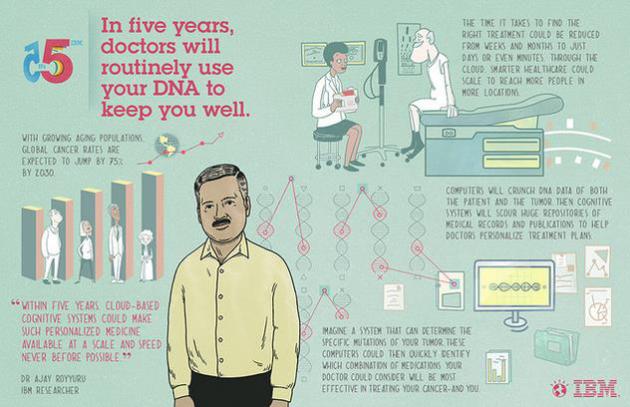
5 Surprising Things That Will Happen In The Next 5 Years.
Local retail will beat online shopping? And I won't have to try and
remember 52 different passwords? That's one of 5 counterintuitive claims
by IBM, highlighted in a
Gizmodo story; here's a clip: "
IBM Research's 5 in 5 list—five
things that will happen in the next five years—is here. Some are quite
surprising and awesome. The bad news: no flying cars and/or realistic
sex robots yet. The good news: doctors routinely using your DNA
information to heal you effectively. But even while that may seem kind
of surprising, given the current state of things, their futurists are
always pretty accurate—perhaps because they're scientists who base their
estimates on actual data rather than dumb planet alignments and tea
leaves. So, without further ado, here are five things that, according to
them, you will see as normal by 2018..."

Artificial Sweeteners Found In River Water And Drinking Supplies.
This story may illicit One Giant Yuck, something to keep in mind the
next time you take a dip in your favorite lake or river. Here's an
excerpt from
The Los Angeles Times: "...
The research, detailed in a paper published Dec. 11
in the online journal PLOS ONE, adds to a growing body of evidence that
people are spiking waterways and their drinking supplies with an array
of compounds that pass through not just them, but even advanced
treatment systems. Antidepressants, antibiotics, steroids and fragrances
are among the products that have been detected in surface waters. Some
of the contaminants have been found in fish tissue. Some compounds not
only get through sewage plants, they also survive purification of
drinking supplies and have been measured in trace amounts in municipal
tap water..."
Your Wireless Router Could Be Murdering Your Houseplants. And here I thought it was just neglect and incompetence. Here's an excerpt of an eye-opening story at
The Daily Dot: "
Are
you slowly killing your houseplants? Probably! But there might be a
reason (other than neglect) why they’re all yellow and wilty: your Wi-Fi
router. An experiment by a handful of high school students in Denmark has sparked some serious international interest in the scientific community..."
Vikings Concussions in 2013. PBS Frontline has a web site called
Concussion Watch, with a running list of
all NFL teams, and the players who have reported concussions in 2013. Here is the list for the
Vikings.
What Did The World Search For In 2013? Don't Ask. But if you absolutely must know
Google has kept a record of the people and events that topped their lists this year.
In Denial That You've Reached Middle Age? A Survey Identifies Some Telltale Signs. Here's a clip from a (sobering) article at
The Washington Post: "...
So
beyond comfort shoes and ear hair, what are some signs that you’re no
longer young? Here’s the full list offered up by respondents to the
survey. Some are particularly British (e.g., joining the National Trust,
taking a flask of tea on a day out). But you’ll get the point.
●Losing touch with everyday technology such as tablets and TVs
●Finding you have no idea what “young people” are talking about
●Feeling stiff
●Needing an afternoon nap..."
TODAY: Partly sunny and milder. Winds: SW 10. High: 35
WEDNESDAY NIGHT: Partly cloudy and colder. Low: 14
THURSDAY: Clouds increase, inch or so of snow late? High: 23
FRIDAY: More clouds than sun, colder. Wake-up: 10. High: 17
SATURDAY: Sunny peeks, plenty cold. Wake-up: 3. High: 14
SUNDAY: Potential snowstorm Chicago. Dry & cold here. Wake-up: -1. High: 10
MONDAY: Bright sun, less wind. Wake-up: -4. High: 11
CHRISTMAS EVE: Milder for Santa's arrival. Wake-up: 7. High: 31
Climate Stories...
6 Ways Climate Change Is Waging War On Christmas.
I found this article curious and timely, from tracking the odds of a
white Christmas to reindeer to cocoa and your favorite local Christmas
tree, changes in the Arctic are having an impact. Here's an excerpt from
Surprising Science at
smithsonian.com: "...
If Santa really lived at the North Pole, he would have drowned long ago.
But any fantasies we have about him making a home on floating sea ice
will surely die within the century. The extent of summer sea ice in the
Arctic has been shrinking, and it could be gone entirely within decades. The U.S. Navy predicts
an ice-free summer Arctic as early as 2016. “We really are heading
towards an ice-free Arctic in the summer,” Andreas Münchow, an Arctic
scientist at the University of Delaware, told the Guardian.
“It just takes a freak event eventually, in the next five or 10 or even
20 years…. The long-term trend is that the ice is disappearing in the
summer in the Arctic...”
Photo credit above: "
Santa could make his home on floating sea ice, but the Arctic may be ice free as early as 2016, according to the U.S. Navy." Image via NOAA.
Why Our Turbulent Weather Is Getting Even Harder To Predict. This article at
The Guardian
is from April, but it seems more relevant and timely than ever, one (of
many) possible explanations for some of the additional volatility we're
seeing in weather patterns over the Northern Hemisphere, especially for
weather systems to become amplified (and stuck), resulting in
disastrous flooding - or drought. Here's a clip from The Guardian:
"...
The trouble is that the gradient between the atmosphere in the lower
latitudes and in the Arctic is being disrupted by global warming," said
Francis. "As the Arctic heats up disproportionately, so does the
atmosphere at the north pole and as it warms up, it rises. The net
effect has been to erode the gradient between the top of the atmosphere
over the tropics and the top of the atmosphere over the Arctic. Less air
pours down towards the north pole and less air is whipped up by Earth's
rotation to form the jet stream. It is becoming less of a stream and is
behaving more like a sluggish estuary that is meandering across the
upper atmosphere at middle latitudes." The effects of this meandering
are now being felt. As the jet stream slows, weather patterns tend to
stick where they are for longer. In addition, the modest waves in the
stream have increased in amplitude so that they curve north and south
more frequently, bringing more weather systems northwards and
southwards..."
Graphic credit:
Met Office. Graphic: Giulio Frigieri, Pete Guest.
Global Warming Explained, In About A Minute. Here's an excerpt of a very good explanation at
NPR: "...
Michael Ranney, the lead author on the , offers this 35-word explanation:
Earth transforms sunlight's visible light energy into infrared
light energy, which leaves Earth slowly because it is absorbed by
greenhouse gases. When people produce greenhouse gases, energy leaves
Earth even more slowly – raising Earth's temperature.
In
a second study reported in the same , Ranney and his colleagues
presented college students with a somewhat longer version of this
explanation (a full 400 words), and found that doing so not only
increased students' understanding of global warming, but also their
acceptance that it's actually occurring..."
Obama And Climate Change: The Real Story. Are actions on the ground matching the rhetoric? Bill McKibbon has the article at
Rolling Stone; here's an excerpt: "...
If
you want to understand how people will remember the Obama climate
legacy, a few facts tell the tale: By the time Obama leaves office, the
U.S. will pass Saudi Arabia as the planet's biggest oil producer and
Russia as the world's biggest producer of oil and gas combined. In the
same years, even as we've begun to burn less coal at home, our coal
exports have climbed to record highs. We are, despite slight declines in
our domestic emissions, a global-warming machine: At the moment when
physics tell us we should be jamming on the carbon brakes, America is
revving the engine. You could argue that private industry, not the White
House, has driven that boom, and in part you'd be right. But that's not
what Obama himself would say..." (Photo: AP).
Global Warming: New Maps Show Temperature And Precipitation Projections Down To The County Level. Here's a clip from the
Summit County Citizens Voice: "...
The jury may still be out on exactly how hot the Earth will be by the end of the century, but as climate models improve, scientists are narrowing the range. In a recent effort to show changes on a regional scale, researchers with the U.S. Geological Survey and Oregon State University created a set of maps and summaries
of historical and projected temperature and precipitation changes for
the 21st century, down to a county level. Find your local global warming
forecast here.
The maps and summaries are based on NASA downscaling of the 33 climate
models used in the fifth annual Climate Model Intercomparison Project
and the current Intergovernmental Panel on Climate Change Assessment
Report. The resulting NASA dataset is on an 800-meter grid with national coverage..."
Arctic Sea Ice - Methane Release - Planetary Emergency?
Alarmist hype? I sure hope so. Could continued melting of the Arctic
trigger a significant methane release? There are a number of scientists
concerned about this. Again, it's the "unknown unknowns", the tipping
points in the climate system we're not aware of (yet) that keep a lot of
researchers up at night. Here's an excerpt from
The Arctic Methane Emergency Group: "...
Research
from US scientist, Jennifer Francis, suggests that the retreat of sea
ice is causing a disruption of jet stream behaviour, producing weather
extremes. Evidence was given to the UK government last year that the
weather extremes being experienced in the UK and elsewhere could be due
to this disruption of weather systems as the Arctic warms relative to
the tropics. This evidence was reported by Robin McKie in the Observer,
on 7th April in an article entitled: “Why our turbulent weather is
getting harder to predict”. The weather extremes from last year are
causing real problems for farmers, not only in the UK, but in US and
many grain-producing countries. World food production can be expected
to decline, with mass starvation inevitable. The price of food will
rise inexorably, producing global unrest and making food security even
more of an issue..."
Snow On Italian Alps Melting At "Unprecedented Rate", Ohio State University Study Finds. Here's an excerpt of an update from
International Business Times: "...
A
six-nation team of glaciologists, led by Ohio State University, drilled
a set of ice cores above the Alto dell’Ortles glacier in northern Italy
and found that, for the first time in thousands of years, the glacier
had shifted from a state of constantly below-freezing to one where its
upper layers were at -- note below -- a melting point. “Our first
results indicate that the current atmospheric warming at high elevation
in the Alps is outside the normal cold range held for millennia,” Paolo Gabrielli, research scientist at Byrd Polar Research Center at Ohio State said. “This is consistent with the rapid, ongoing shrinking of glaciers at high elevation in this area...” (Image: NASA).
Reddit's Science Forum Banned Climate Deniers. Why Don't All Newspapers Do The Same? Here's a clip from
Grist: "...
Instead
of the reasoned and civil conversations that arise in most threads,
when it came to climate change the comment sections became a
battleground. Rather than making thoughtful arguments based on
peer-reviewed science to refute man-made climate change, contrarians
immediately resorted to aggressive behaviors. On one side, deniers
accused any of the hard-working scientists whose research supported and
furthered our understanding of man-made climate change of being bought
by “Big Green.” On the other side, deniers were frequently insulted and
accused of being paid to comment on reddit by “Big Oil.” After some time
interacting with the regular denier posters, it became clear that they
could not or would not improve their demeanor. These problematic users
were not the common “internet trolls” looking to have a little fun
upsetting people..."
Photo credit above:
Shutterstock/alphaspirit
Water Scarcity Seen Worsening As Climate Changes, Study Shows. Here is one of many implications and complications of a warming, more volatile climate - as described in this story at
Bloomberg BusinessWeek; here's an excerpt: "
Climate
change will increase the number of people at risk of absolute water
scarcity by 40 percent this century, according to a German institute.
Ten in 100 will have less than 500 cubic meters (132,000 gallons) of
water available a year, up from 1-2 today, should Earth warm by 3
degrees Celsius (5.4 degrees Fahrenheit) above pre-industrial levels and
populations grow, according to the Potsdam Institute for Climate Impact
Research. The global average is about 1,200 cubic meters, and much
greater in industrialized nations, PIK said, citing its and other
analysts. “Water scarcity is a major threat for human development as for
instance food security in many regions depends on irrigation,” said
Qiuhong Tang of the Chinese Academy of Sciences, who co-wrote the study.
“Agriculture is the main water user worldwide...”
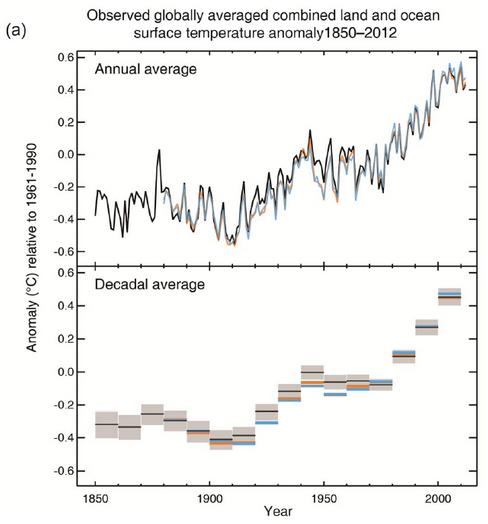 The Global Temperature Jigsaw.
The Global Temperature Jigsaw. More on the alleged temperature "pause" from
RealClimate: "...
First an important point: the global temperature trend over only 15 years is neither robust nor predictive of longer-term climate trends.
I’ve repeated this now for six years in various articles, as this is
often misunderstood. The IPCC has again made this clear (Summary for
Policy Makers p. 3):
Due to natural
variability, trends based on short records are very sensitive to the
beginning and end dates and do not in general reflect long-term climate
trends.
You can see this for yourself by comparing the trend from mid-1997 to the trend from 1999 : the latter is more than twice as large: 0.07 instead of 0.03 degrees per decade (HadCRUT4 data)..."
Graphic credit above: "
The
global near-surface temperatures (annual values at the top, decadal
means at the bottom) in the three standard data sets HadCRUT4 (black),
NOAA (orange) and NASA GISS (light blue). Graph: IPCC 2013."
Are Hurricanes Getting Stronger? Science May Finally Be Approaching An Answer.
Mother Jones has a very interesting article that caught my eye - here's an excerpt: "...
The
result? The scientists found that globally, hurricane wind speeds are
increasing at a rate of a little more than two miles per hour per
decade, or just faster than six miles per hour over the entire period.
There are some key caveats, though, the biggest being that the trend
they found was not statistically significant at usually accepted levels.
(For nerds: the p value
was 0.1). But there were strong and significant trends in some
hurricane basins of the world, especially the North Atlantic (the region
encompassing the Caribbean, Gulf of Mexico, and open Atlantic north of
the equator), where storms have been strengthening at the rate of nearly
nine miles per hour per decade (see chart above). But other basins
offset that, including the western North Pacific, which showed a
negative trend..."
Faux Pause 2: Warmest November On Record, Reports NASA, As New Studies Confirm Warming Trend. Here's an excerpt of a good explanation from
ThinkProgress: "
A new study
by British and Canadian researchers shows that the global temperature
rise of the past 15 years has been greatly underestimated. The reason is
the data gaps in the weather station network, especially in the Arctic.
If you fill these data gaps using satellite measurements, the warming
trend is more than doubled in the widely used HadCRUT4 data, and the
much-discussed “warming pause” has virtually disappeared.
“There
are no permanent weather stations in the Arctic Ocean, the place on
Earth that has been warming fastest,” as New Scientist explained five years ago.
“The UK’s Hadley Centre record simply excludes this area, whereas the
NASA version assumes its surface temperature is the same as that of the
nearest land-based stations...”
Graphic credit above: "
The corrected data (bold lines) are shown compared to the uncorrected ones (thin lines)." Via RealClimate.
New Climate Records Focus On Earth's Sensitivity. Here's a clip from a story at Climate New Network and
Climate Central: "...
The Geological Society of London (GSL)
says the sensitivity of the Earth’s climate to CO2 could be double
earlier estimates. The Society has published an addition to a report by a
GSL working party in 2010, which was entitled Climate Change: Evidence
from teh Geological Record. The
addition says many climate models typically look at short term, rapid
factors when calculating the Earth’s climate sensitivity, which is
defined as the average global temperature increase brought about by a
doubling of CO2 in the atmosphere..."
Photo credit above: "
Evidence
from studies of past climate change suggest if longer-term factors are
taken into account, the Earth's sensitivity to a doubling of CO2 could
also be double than predicted." Credit: world.edu.
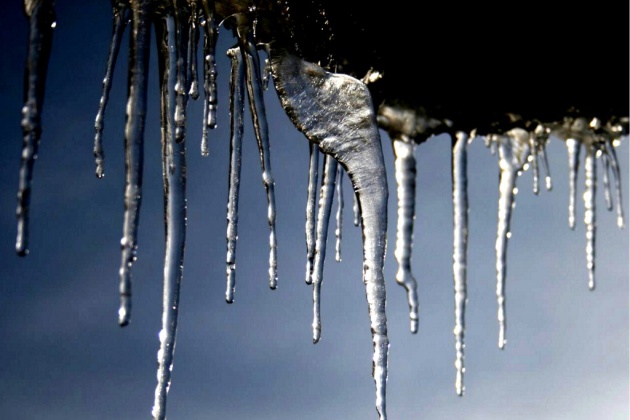

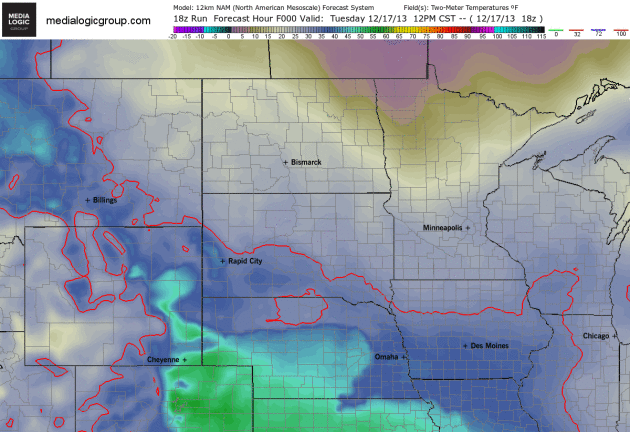
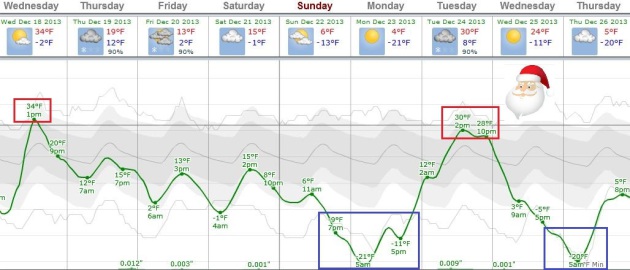
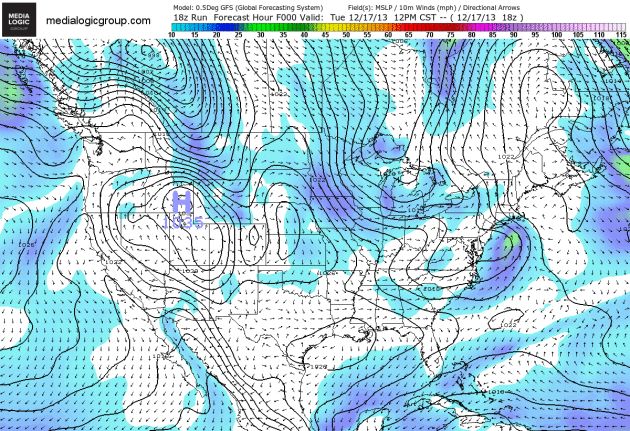

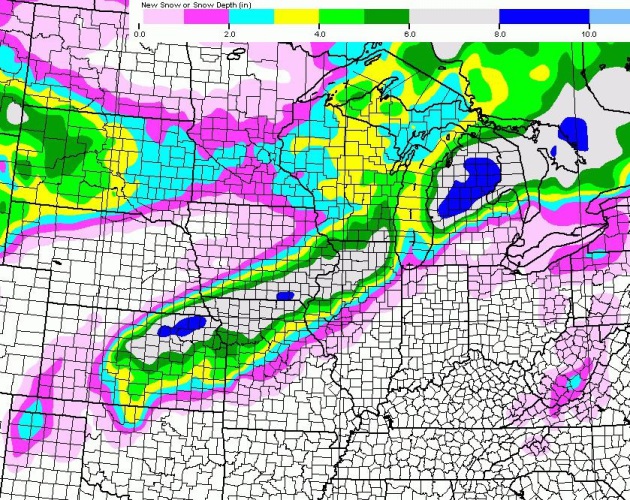


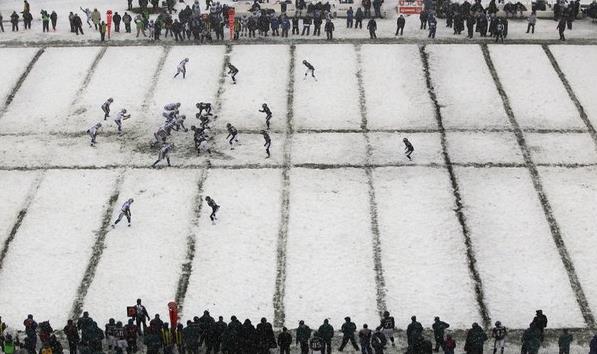

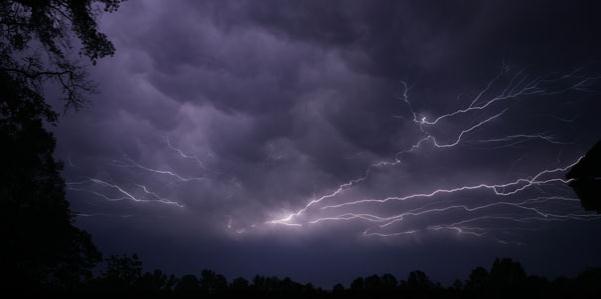
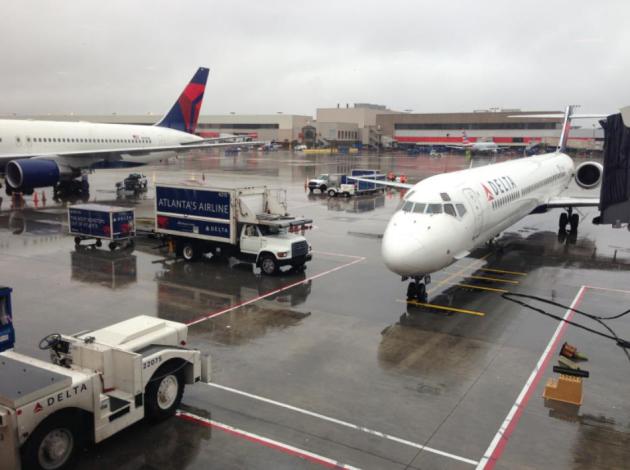
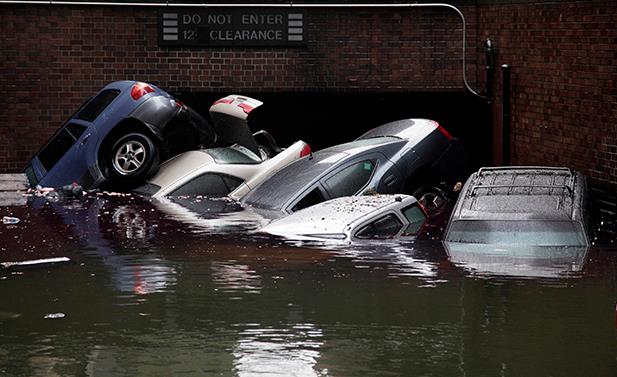

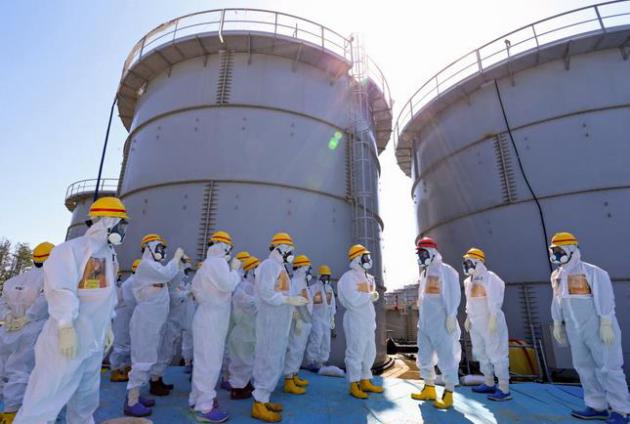

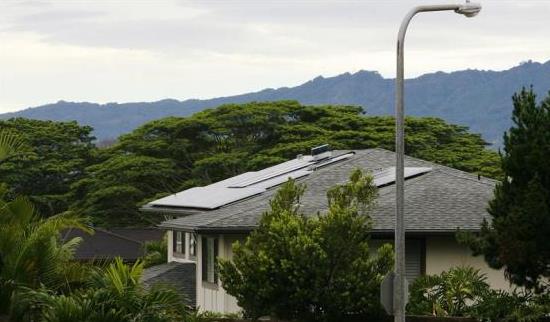








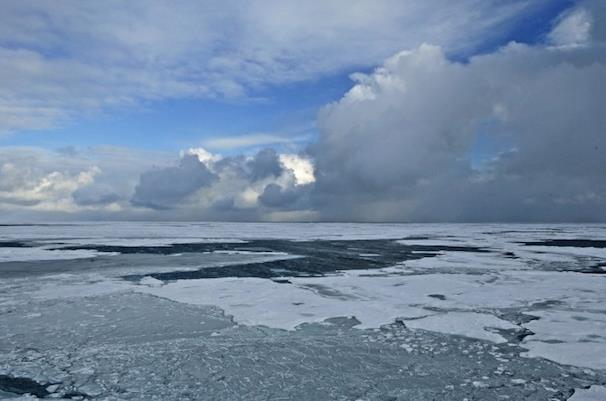
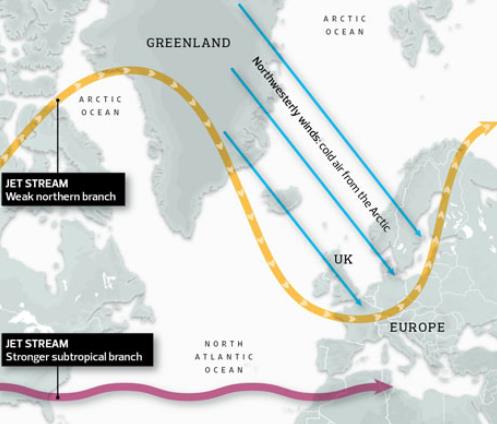


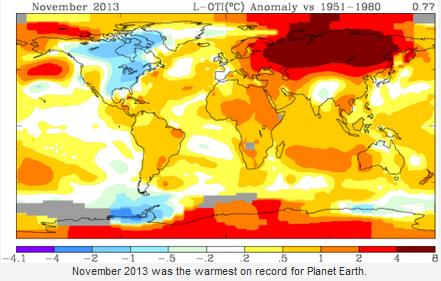

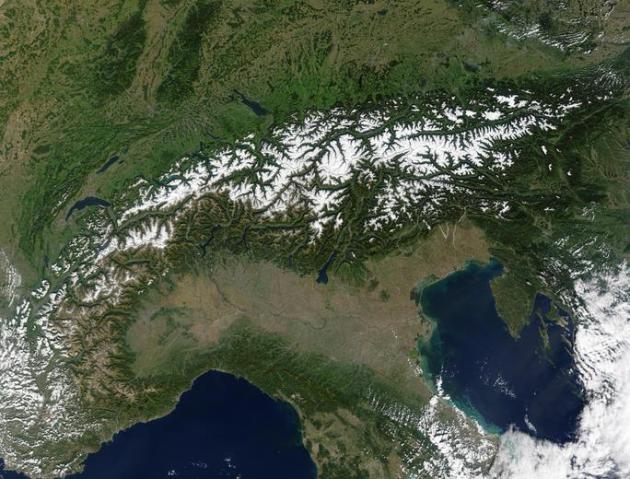
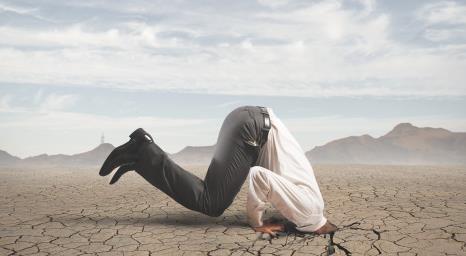


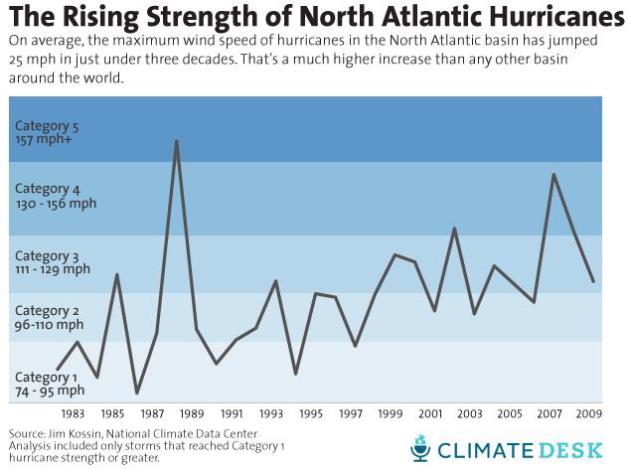
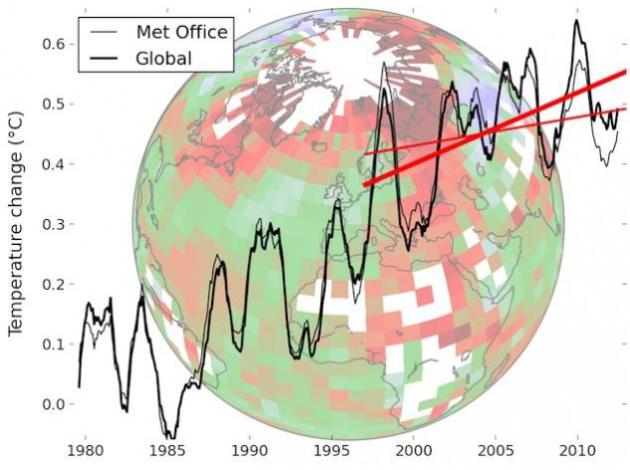
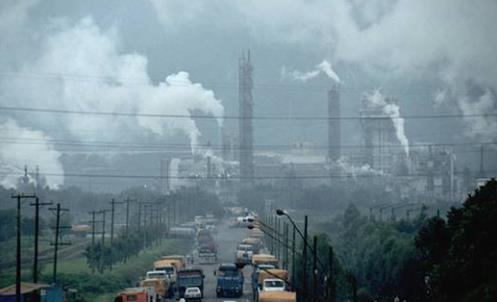
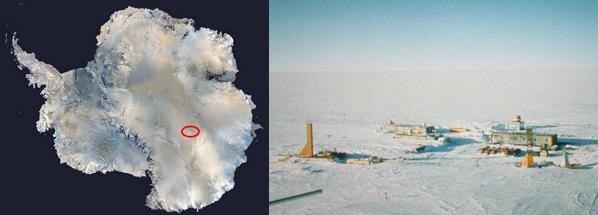
Hi admin,
ReplyDeleteI read your blog, its really awesome,
With the internet as big and far reaching as it is today everyone should start thinking about having some sort of online presence in order to keep up with the changing methods of buying and selling.
see more details: vapor shops near me
your regards
alfajripon